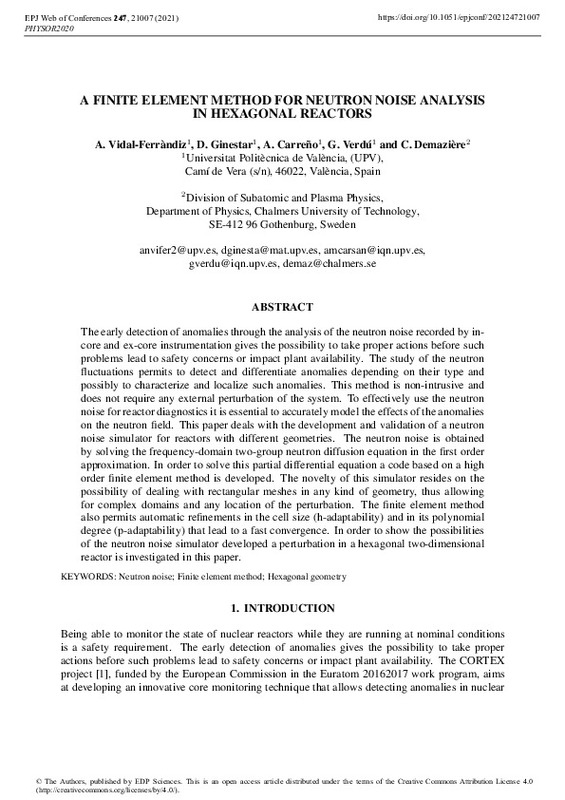JavaScript is disabled for your browser. Some features of this site may not work without it.
Buscar en RiuNet
Listar
Mi cuenta
Estadísticas
Ayuda RiuNet
Admin. UPV
A finite element method for neutron noise analysis in hexagonal reactors
Mostrar el registro completo del ítem
Vidal-Ferràndiz, A.; Ginestar Peiro, D.; Carreño, A.; Verdú Martín, GJ.; Demazière, C. (2021). A finite element method for neutron noise analysis in hexagonal reactors. EPJ Web of Conferences (Online). 247:1-8. https://doi.org/10.1051/epjconf/202124721007
Por favor, use este identificador para citar o enlazar este ítem: http://hdl.handle.net/10251/182224
Ficheros en el ítem
Metadatos del ítem
| Título: | A finite element method for neutron noise analysis in hexagonal reactors | |
| Autor: | Demazière, C. | |
| Entidad UPV: |
|
|
| Fecha difusión: |
|
|
| Resumen: |
[EN] The early detection of anomalies through the analysis of the neutron noise recorded by in-core and ex-core instrumentation gives the possibility to take proper actions before such problems lead to safety concerns or ...[+]
|
|
| Palabras clave: |
|
|
| Derechos de uso: | Reconocimiento (by) | |
| Fuente: |
|
|
| DOI: |
|
|
| Editorial: |
|
|
| Versión del editor: | https://doi.org/10.1051/epjconf/202124721007 | |
| Título del congreso: |
|
|
| Lugar del congreso: |
|
|
| Fecha congreso: |
|
|
| Código del Proyecto: |
|
|
| Agradecimientos: |
This project has received funding from the Euratom research and training programme 2014-2018 under grant agreement No 754316. Also, this work has been partially supported by Spanish Ministerio de Economía y Competitividad ...[+]
|
|
| Tipo: |
|









